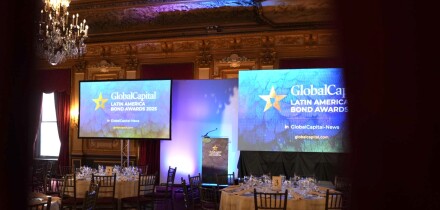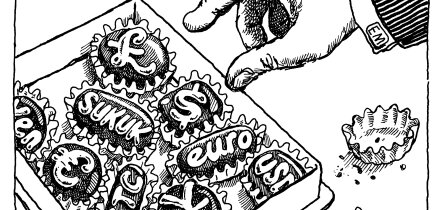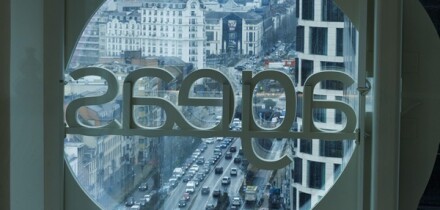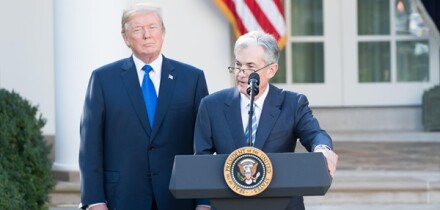What Is A One-Touch Option? Internationally active market participants are always subject to changing foreign exchange rates and hedge their exposure by trading an immense variety of options worldwide.
Besides vanilla (European style put and call) options, the so-called first generation exotics have become standard derivative instruments. We distinguish between:
* vanilla options that knock in or out if the underlying hits
a barrier (or one of two barriers) and
* all kinds of touch options which include
one-touch/no-touch options and pay a fixed amount of a
certain currency if the pair ever trades at or beyond the
touch-level and zero if it does not. Double-touch options
work the same way with two barriers.
In this article we take a detailed look at the pricing of one-touch options, which are often also called binary or digital options, hit options or rebate options. They trade as listed and are over-the-counter instruments.
Touch-time is the first time the underlying trades at or beyond the touch-level. The barrier determination agent, which is specified in the contract, determines the touch-event. The Foreign Exchange Committee, which includes representatives of major financial institutions engaged in foreign currency trading worldwide, has recommended a set of best practices for the barrier options market and is planning to publish a revision of the International Currency Options Master Agreement (ICOM) reflecting some new recommendations. Following, some of its key regulations:
* The barrier needs to have been traded within the foreign
exchange markets.
* All transactions have to be completed between 5:00 a.m.
Sydney time on Monday and 5:00 p.m. New York time
on Friday.
* All transactions need to be of a commercial size, generally
at least USD3 million in liquid markets.
* The barrier or touch-level is usually monitored
continuously.
Applications Of One-Touch Options
Speculative market participants like to use one-touch options as bets on a rising or falling exchange rate. Clients, who prefer to hedge, trade one-touch options as a rebate in order to secure themselves compensation in case their strategy does not work out. One-touch options are also often integrated into structured products to increase returns on forward and interest rates.
Quotation Conventions & Bid-Ask Spreads
If the payoff is at maturity, the undiscounted value of the one-touch is the touch probability under the risk-neutral measure. The market standard is to quote the price of a one-touch as a percentage of the payout. The price of a one-touch depends on the overhedge and the bid-ask spread. The spread in turn depends on the currency pair and the client. Interbank trading spreads are usually between 2% and 4% for liquid currency pairs.
Cost Of Trading & Its Implication
On The Market Price
The theoretical value (TV) of a one-touch is based on the standard Black-Scholes model for the underlying exchange rate, in this case euro/dollar, a geometric Brownian motion with a constant parameters euro interest rate, dollar interest rate and volatility. The TV is defined as the expectation under the risk neutral measure of the discounted payout of the one-touch. The tradable price is the sum of the TV and the overhedge. Two typical examples, one for an upper touch level in euro/dolar and one for a lower touch level, are shown in the charts.
Clearly, there is no overhedge for one-touch options with a TV of 0% or 100%, but it is worth noting that low-TV one-touch options can be twice as expensive, and sometimes even more expensive, than their TV. SuperDerivatives.com has become a standard reference for pricing exotic fx options. The overhedge arises from the cost of risk management.
In the Black-Scholes model the only source of risk is the underlying exchange rate, because the volatility and interest rates are assumed constant. However, volatility and rates themselves vary independently. For example movement in spot exposes the trader's positions to unstable vega and rho, change of the value with respect to volatility and rates. For short dated options, the interest rate risk is negligible compared to the volatility risk. Hence the overhedge of a one-touch is a reflection of a trader's cost of managing his vega exposure.
Example
Let's reflect over a one-year one-touch in dollar/yen with a dollar payout. Our assumed market parameters are a spot of JPY117, a yen interest rate of 0.10%, a dollar rate of 2.10%, volatility of 8.80%, a 25delta risk reversal of 0.45% in favor of dollar calls and a 25delta butterfly 0.37%. The notion of risk reversals and butterflies are illustrated in the graph shown below.
The touch level is JPY125 and the TV is at 38.2%. If we only hedge the vega exposure we need to consider two main risk factors:
* the change of vega as the spot changes, often called
vanna and
* the change of vega as the volatility changes, often called
volga (or volgamma or vomma).
To hedge this exposure we need to deal with both effects separately.
The vanna of the one-touch is 9.0, the vanna of the risk reversal is 4.5. We therefore need to sell 2 (=-9/4.5) risk reversals, and for each of them we need to pay 0.15% of the dollar amount, which causes an overhedge of 0.3%. The volga of the one-touch is 1.0, the volga of the butterfly is 0.035. So we need to sell 28 (=-1/0.035) butterflies, each of which pays us 0.27% of the dollar amount, which causes an overhedge of -7.7%. Therefore, the overhedge is 7.4%.
However, we will get to the touch level with a risk-neutral probability of 36%, in which case we would have to unwind the hedge. Therefore the total overhedge is -64%*7.7%=-4.7%. This leads to a mid market price of 33.5%.
There are different beliefs among market participants about the unwinding cost. Other prices for one-touch options can be caused by different vega profiles in the trader's portfolio, a marketing campaign or a hidden additional sales margin.
The Cost Of Risk Reversals & Butterflies
The cost of the risk reversal mentioned above is computed as follows: the difference of the call with correct implied volatility and the call with at-the-money volatility minus the difference of the put with correct implied volatility and the put with at-the-money volatility. This can be well approximated by the vega of the at-the-money vanilla times the risk reversal in terms of volatility. Similarly, the cost of the butterfly can be approximated by the vega of the at-the-money volatility times the butterfly in terms of volatility.
Further Applications
The method illustrated above shows how important the current smile of the vanilla options-market is for the pricing of simple exotics. Similar types of approaches are commonly used to price other exotic options. For long-dated options the interest rate risk will take over the lead in comparison to short dated options where the volatility risk is dominant. As a matter of consistency the method can also reproduce the smile for the vanilla market.
This week's Learning Curve was written by Uwe Wystup, an FX Product Development official at Commerzbank Securities in Frankfurt.





